1 CPU处理性能瓶颈-散热技术
温度过高会导致 CPU 损坏。热来源→晶体管运算,晶体管密度?,速度?
发热:目前 intel i7-965 已超过130瓦,电子设备的失效 55%是由于过热引起。
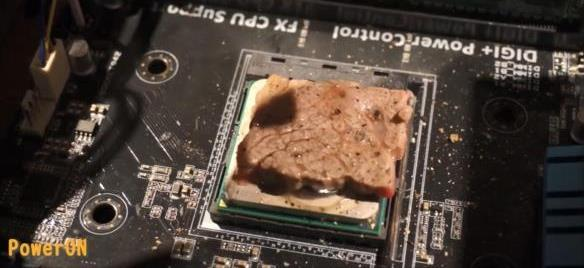
intel 在 其技术论坛中提及,由于线宽进人纳米尺度时,其漏电流与散热问题迟迟无法获得一个妥善的解决方案 , 因此暂时放弃开发更高主频率的 CPU,而转向发展双核心甚至多核心 CPU。 即使如此,散热问题也只是暂时得到缓解 ,单个 CPU 的发热量仍会持续增加,散热面临挑战更大。
本技术可在CPU核心硅芯片表面直接低温金属化,焊接,优点如下:
1.不损坏CPU:室温下金属化(20-50℃),不损坏CPU内部电路,功能
2.导热能力显著提升:焊接导热,铜热系数 (200-400Wm.k)远大于普通导热硅脂导热系数(1-2Wm.k),导热能力显著提升。
3.体积小,电路板=散热片,无噪音,无灰尘,加工成本低
图中截面可以看出,焊锡层与金属化铜层,硅芯片层之间结合良好,芯片产生的热量可以迅速传导到焊锡层,显著降低芯片工作温度。
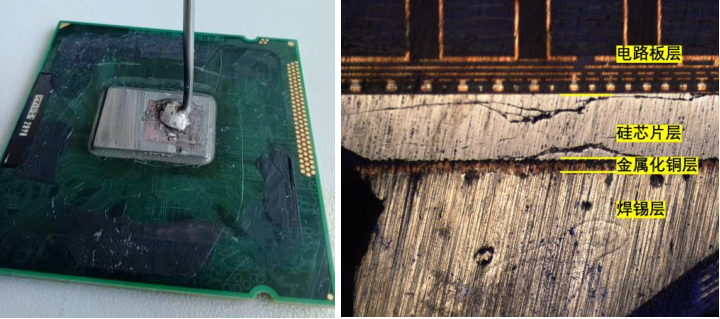
2 CPU处理性能瓶颈-未来趋势
2020年9月Nature 发表一篇关于热管理的文章,明确指出,一体化,集成化的散热思想为未来热管理的趋势“Substantial research efforts have focused on improving the thermal path between the hotspot and the coolant. However, heat extraction capability is fundamentally limited by the thermal resistance between the semiconductor die and packaging”.
文章主要内容:将发热芯片内部刻蚀多个微孔道,然后在其中流通冷却液,将芯片产生的热量迅速带走,达到快速冷却的目的,其实质是将散热片与发热芯片集成在一起的冷却结构。
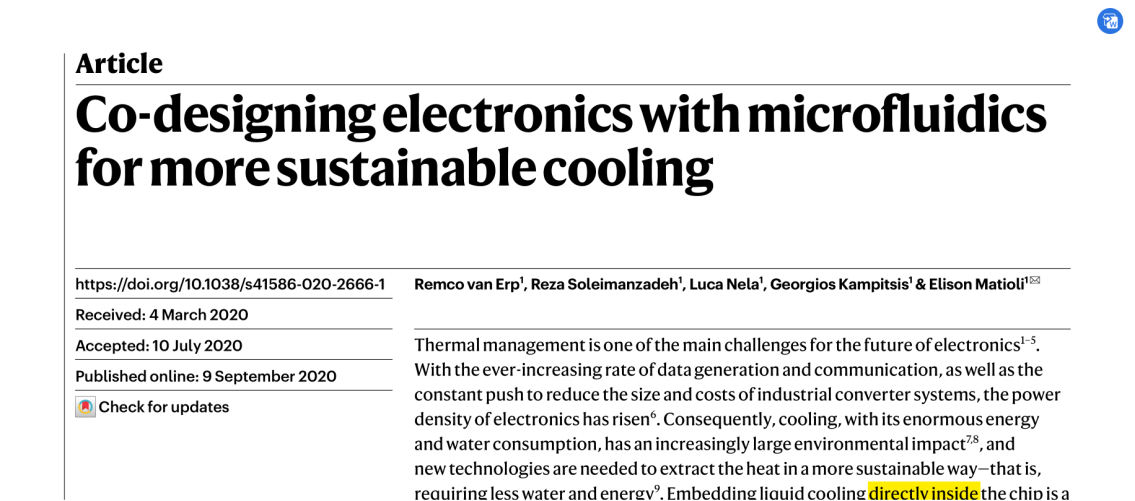
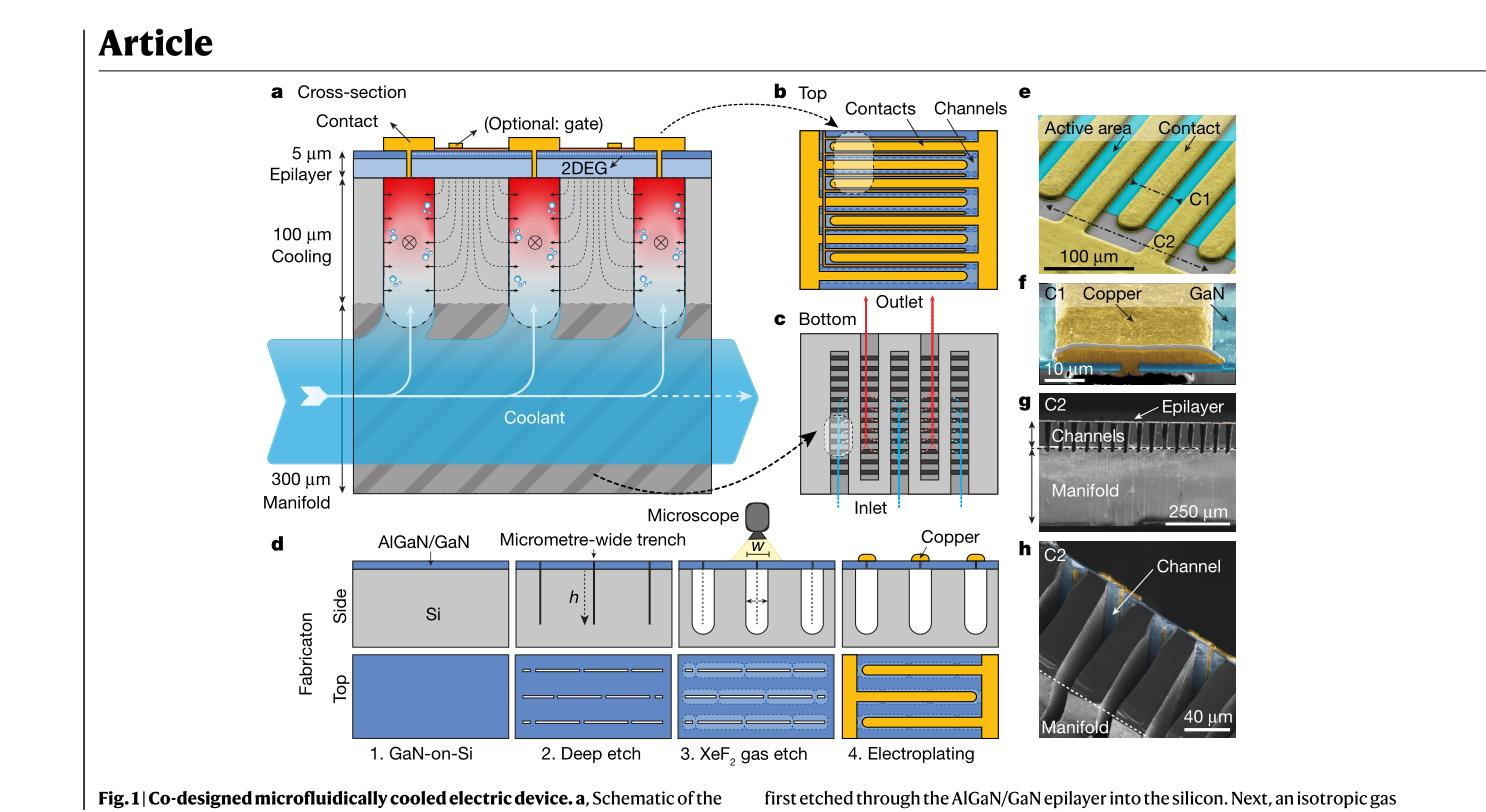
3 CPU处理性能瓶颈-结构与应用
如图所示:图a为散热示意图,热量由处理器die产生,经金属层-焊接层直接传导到热沉,中间没有低导热材料,显著提高了其导热能力,图b为CPU截面光学显微图片,各层接触紧密,降低热阻,图c,d为CPU直接焊接到笔记本热沉图片,图e为将焊接后的CPU安装到笔记本电脑中直接运行应用。
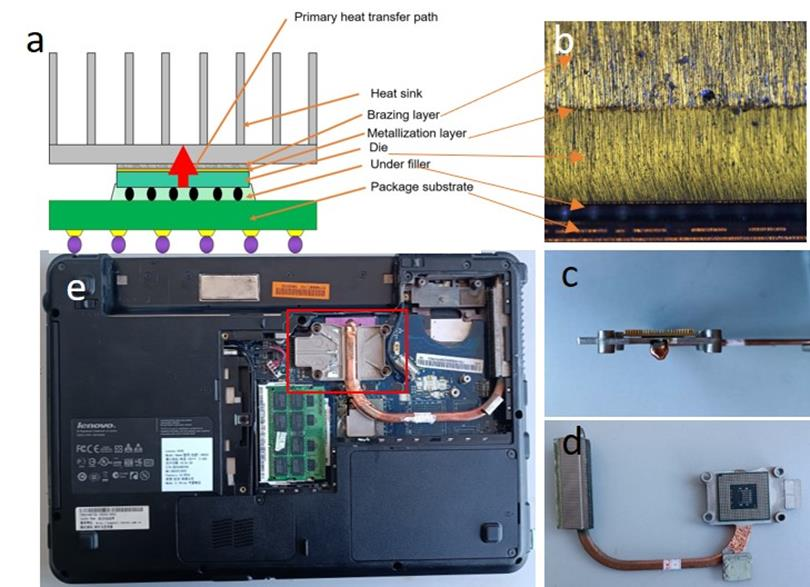
4 CPU处理性能瓶颈-散热测试
图为鲁大师温度压力测试结果,二者均无风扇降温图a为焊接后的CPU温度压力测试结果,图b为普通导热硅脂升温曲线,二者对比之下,使用本技术的CPU焊接散热效果明显优于市售的导热硅脂(导热系数3-6W/ms), 使用本技术的笔记本经过200s左右达到报警温度(83℃),而相同条件下使用市售导热硅脂的笔记本则用60s左右达到同样报警温度。
充分说明了本技术在处理散热领域强大的应用前景,本技术还可以应用于手机散热,内存散热,显卡散热,服务器散热等处理散热领域。

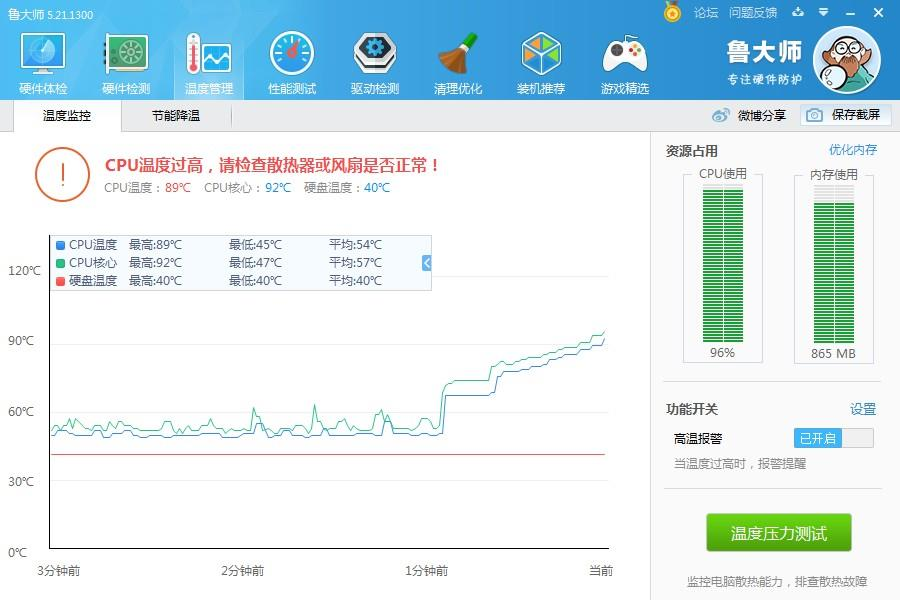
5 CPU处理性能瓶颈-难度挑战
三个问题
?降低热阻,高效散热
?低温金属化,焊接,防止烧毁CPU
?热失配问题
Due to imperfections in surface topography, a thermal interface material (TIM1) is typically used to reduce the contact resistance between silicon die and lid, to fill the gaps between the two imperfect surfaces. Under high magnification, even polished surfaces exhibit surface roughness sufficient for disruption of heat flow across the contacting interfaces.
Polymer based materials are commonly used as TIM1 for heat conduction across the interface. Polymer TIM comprises of conductive filler particles in a polymer matrix. Since most polymer matrix has very poor thermal conductivity, the heat conduction is mainly through the intimate contact between the filler particles,Therefore, it is easy to understand that why a 100% metal or solder TIM has much higher thermal conductivity than a polymer base TIM.
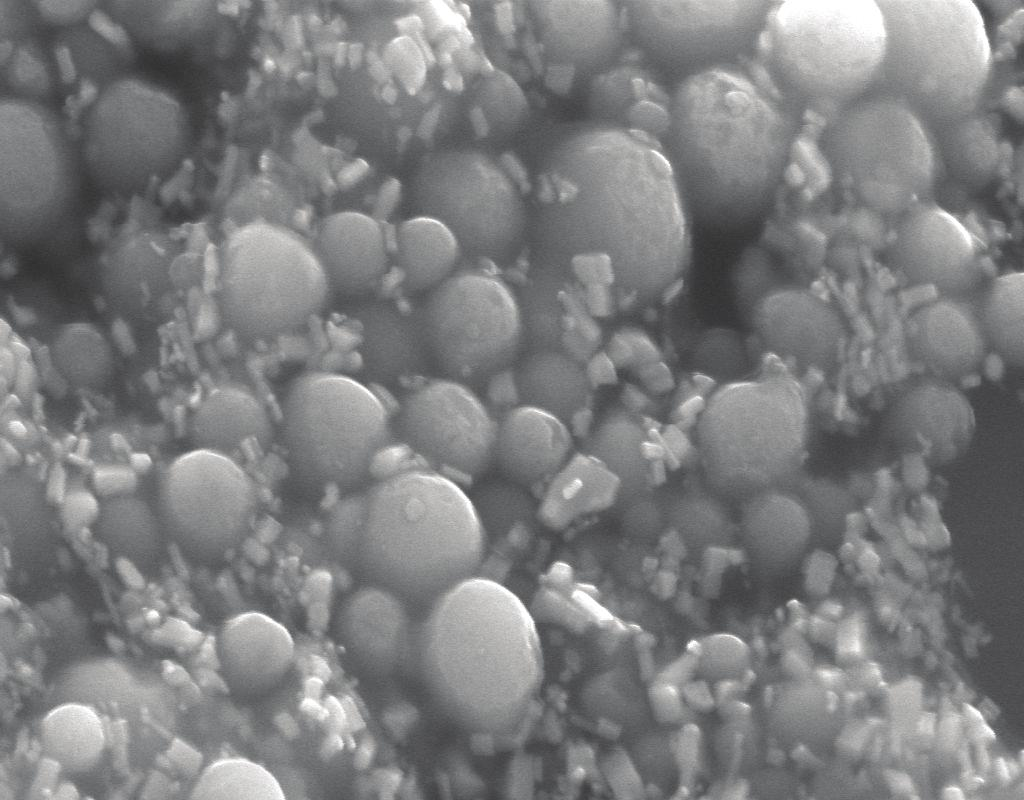
We present a welding integrated cooling structure combining heat sink and a single-crystalline silicon CPU die, produced with the need for low room temperature CPU metallization firstly and welding to the heat sink subsequently.

The layer has to absorb strain resulting from the mismatch of coefficients of thermal expansion (CTE) of the die, substrate and the integrated heat sink during temperature cycling. Figure a and b is microstructure of metallization surface , figure c is the cross-section between silicon die and metallization layer, the porous structure may release the thermal strain during temperature cycling.

6 CPU处理性能瓶颈-社会需求
在百度上查找CPU焊接散热关键词,搜索结果中很容易就能找到关于CPU直接焊接热沉的需求,愿望,可见,这个技术已在社会中,一定程度上达成共识,成为亟待解决的问题。



